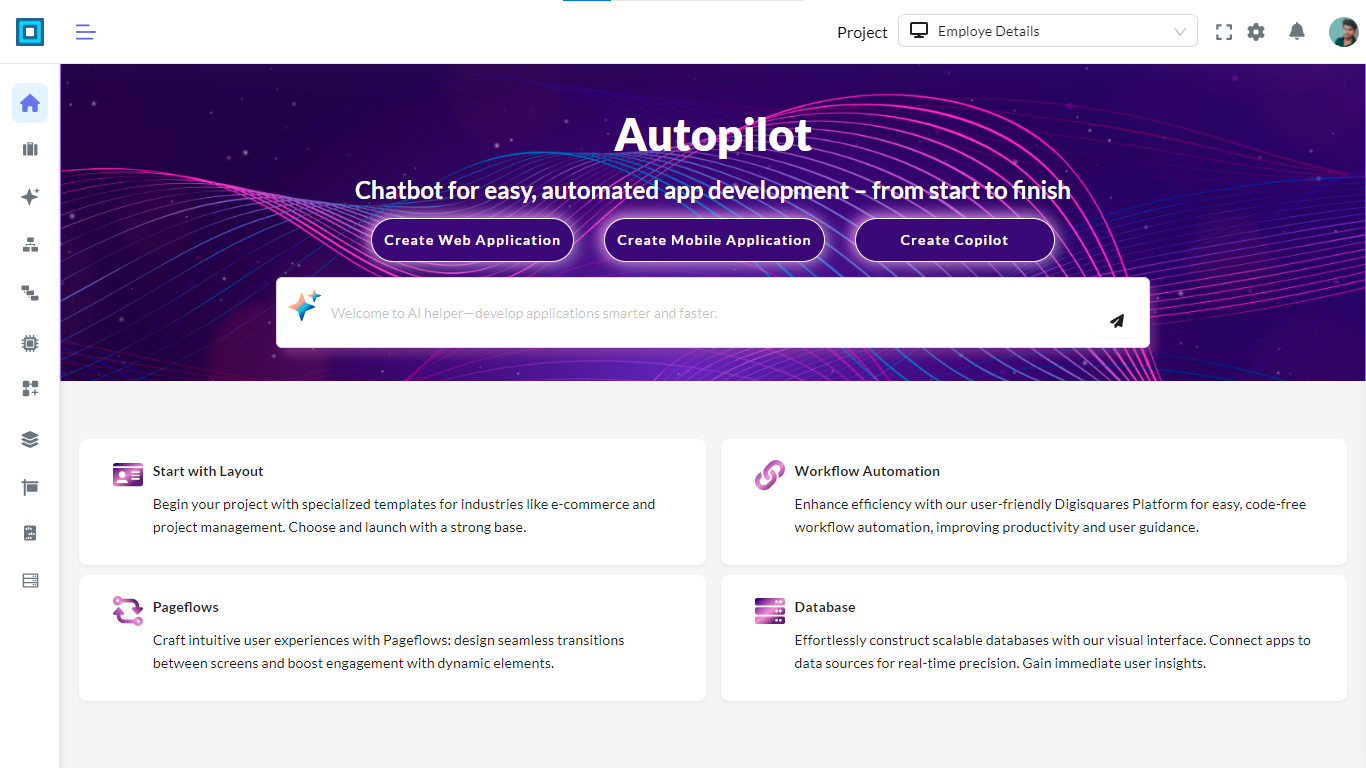Overview
Digisquares web application overview
The Digisquares premise is simple you just need to get someone that understands your business to create the app you need in the Digisquares environment.
On a Digisquares platform, IT and business teams work together to build high quality applications and accelerate time to market.
Build enterprise grade applications that enable your customers, and partners, to better communicate and perform business transactions. Apps that promote personalized customer engagements help to improve satisfaction, retention, and revenue.
Getting Started
1. Signing Up
- Visit the Platform Website: Go to the Digisquares homepage.
- Create an Account: Click on the Sign Up button and fill in your details.
- Email Verification: Verify your email by clicking on the link sent to your inbox.
2.Logging In
- Go to Login Page: Click on the Login button on the homepage.
- Enter Credentials: Enter your email and password.
- Dashboard Access: Upon logging in, you'll be directed to your dashboard.
Instant development and deployment
Modern low-code platforms, like Digisquares, provide built-in tools and ready-to-use components that significantly accelerate application development and deployment. These platforms offer prebuilt templates for forms, reports, and reusable code snippets, reducing the need for manual coding and framework setup.
Unlike traditional development, where developers must manually integrate databases and build UI frameworks, Digisquares automates these processes, allowing IT teams to focus on business logic rather than infrastructure. With real-time previews, developers can instantly see how their applications look and function, minimizing errors and ensuring faster rollouts.

Simplified pre-built integrations
Digisquares platforms allow for easy coupling with external and existing systems and new technologies, with a wide array of out of the box APIs and other smart integration tools. tasks required in application development Businesses can streamline, automate, and harmonize manual internal processes so that developers aren’t overburdened and can focus on higher value tasks. Minimizing overwhelming coding needs gives IT relief from the pressure of their often times unconquerable app backlog.

Eliminate backlogs and reduce shadow IT
Successful projects are improved by indirect audience feedback, such as how they interact with the apps. Whether gathering feedback during usability testing or after the app goes live, successful project teams keep a close analytical eye on their audience. Conduct usability testing during development, and use analytics after launch to identify popular features and functions. Continually improve the application by incorporating user feedback and analytical insights.

Reduce reliance on legacy apps
Outdated legacy applications, although vital to business processes, drain efficiency, and keep your IT resources in a constant state of updates and fixes. This means you spend more time on maintenance than innovation. Revive your business ecosystem using low code platforms, with modern frameworks that can build consumer grade applications.
